Synthetic Data Set
Generate a synthetic social network and visualise it using Python, NetworkX for graph generation and Matplotlib for visualization.
| Creating a Synthetic Social Network |
|---|
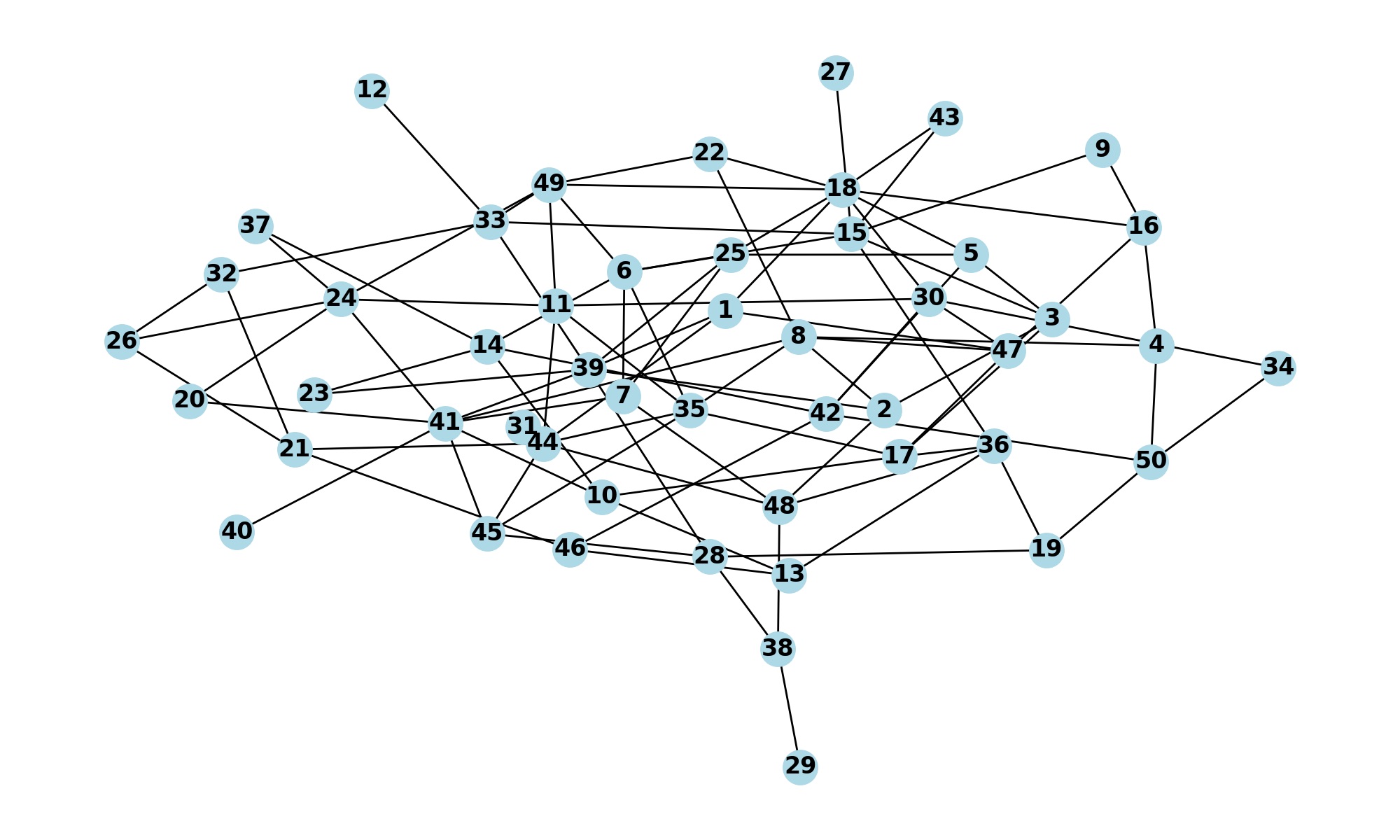 |
Next, generate the nodes and edges
| Code to generate network |
|---|
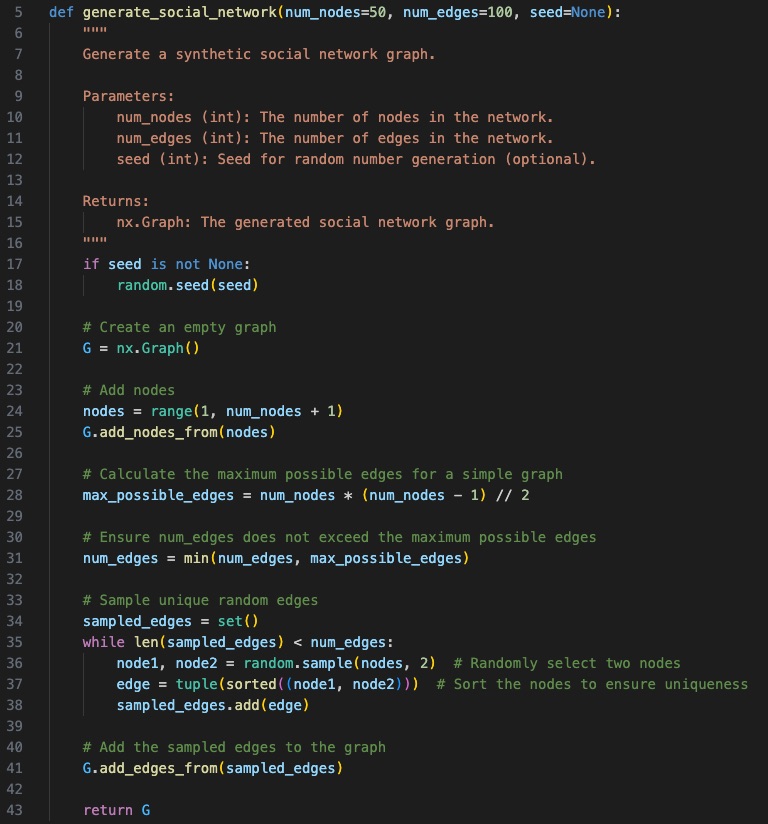 |
Influence Propagation
Influence propagation in the context of a social network refers to the process of spreading influence or information from one or more initial nodes (often called seed nodes) to other nodes within the network.
This propagation is typically based on certain criteria or influence scores associated with each node.
In this example:
Influence scores are associated with each node in the social network and they represent the potential influence a node has over others.
Assuming influence scores can range from 0 to 1, where 0 indicates no influence, and 1 indicates maximum influence, the following code adds an attribute "influence_score" to nodes to represent their influence scores.
| Code to Add Influence Score |
|---|
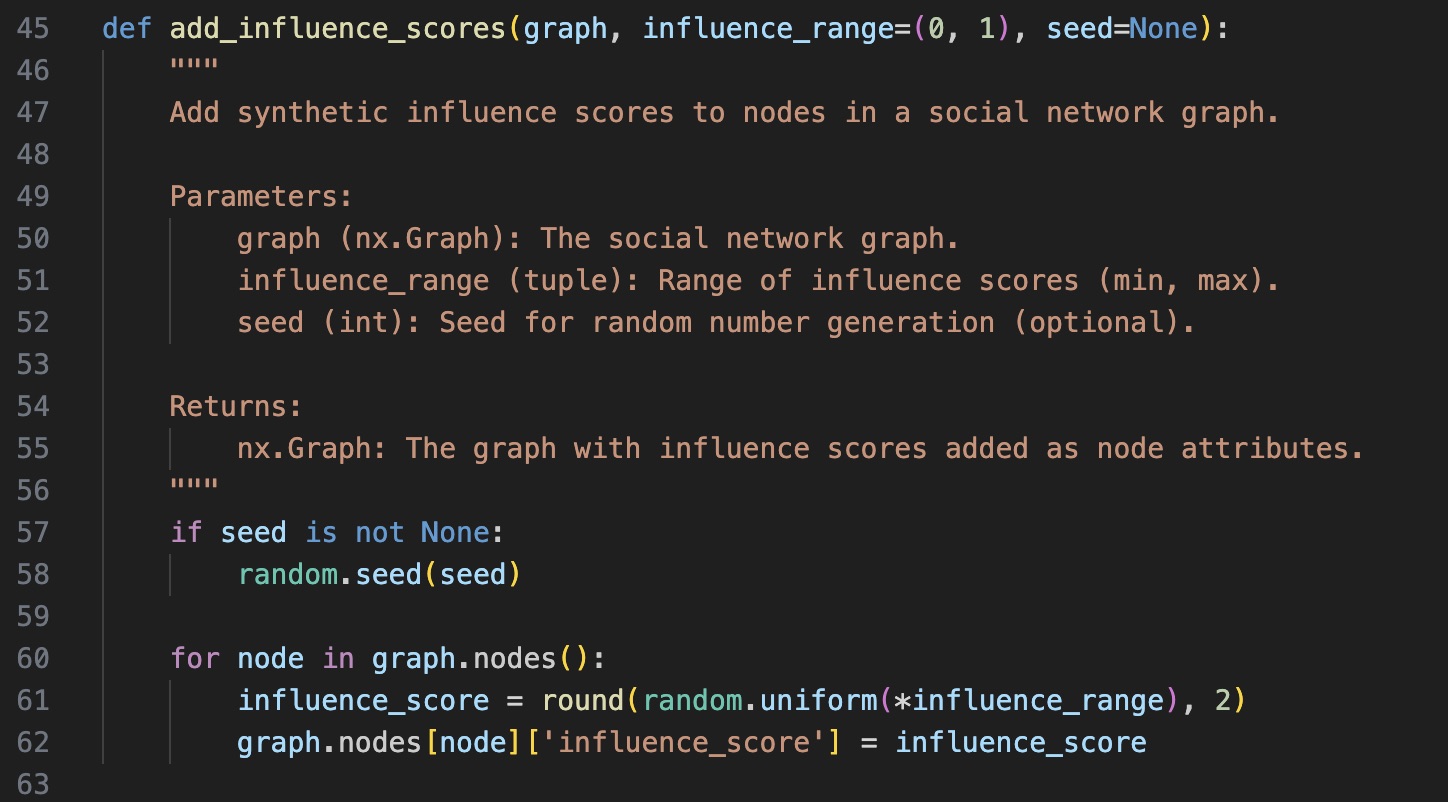 |
Next is to simulate the influence propagation within the nextwork.
The program simulates influence propagation within the social network, starting from a specific node (the start_node, 1) with a certain influence score.
The simulate_influence_propagation function initiates the propagation process.
| Code to Simulate Propagation |
|---|
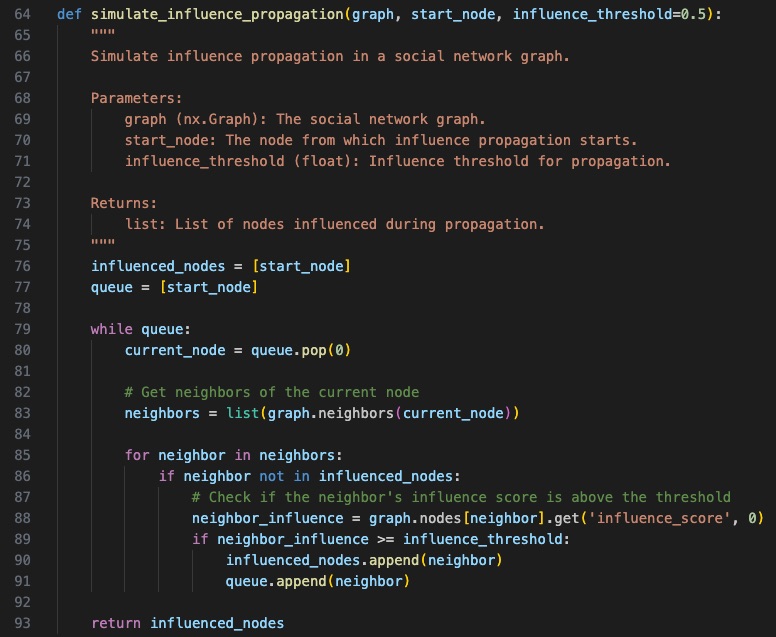 |
The propagation process:
The propagation process begins with the start_node (here, set to 1), which is considered an influencer.
It checks the influence score of the start_node against a predefined influence threshold (influence_threshold). If the score is above the threshold, the node is considered to have enough influence to propagate.
The program then identifies the neighbors of the current node (nodes directly connected to it). For each neighboir, it checks their influence scores and whether they meet the influence threshold.
If a neighbor node has sufficient influence, it is added to the list of influenced nodes, and the process continues with that neighbor node.
The propagation process iteratively continues until there are no more nodes to propagate or until the influence threshold is no longer met.
| Setting the Propagation |
|---|
 |
Note:
This code demonstrates influence propagation within the synthetic social network dataset. You can adjust the start_node and influence_threshold to see how different nodes initiate and propagate influence in the network.
| Visualising the influence network |
|---|
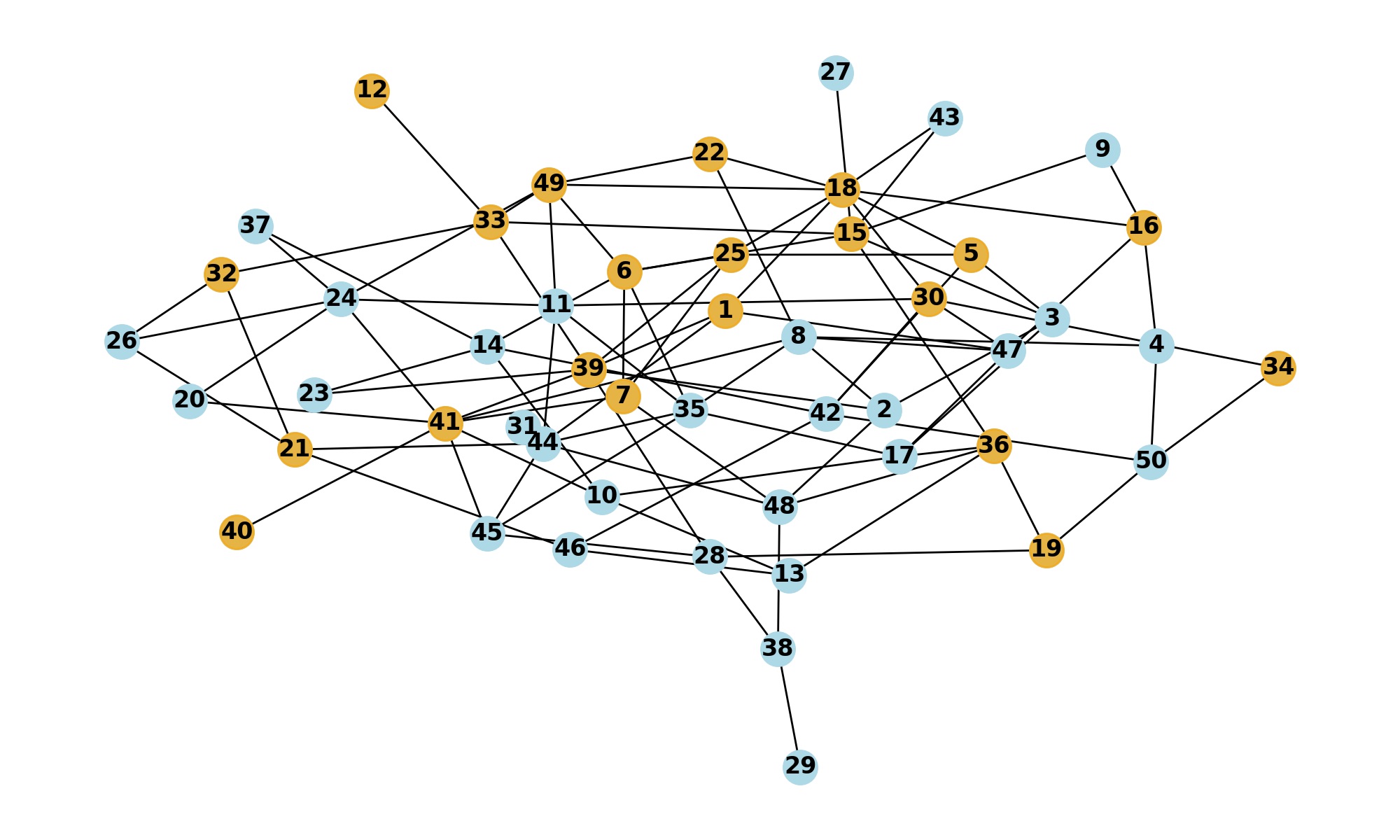 |
The program visualizes the social network, highlighting influenced nodes in orange. This visualization helps illustrate which nodes were influenced during the propagation process.
Influence propagation based on influence scores simulates the idea that certain individuals in a social network have the potential to affect others based on their influence scores. This program allows one to explore how influence spreads from a starting point to other nodes in the network, offering insights into the dynamics of influence in social networks.
Implications of Identifying Influenced Node
-
Understanding Information Flow: Identifying influenced nodes helps us understand how information, opinions, or behaviors spread within a social network. It provides insights into the paths that information takes as it travels from one node to another.
-
Targeted Marketing and Advertising: In marketing, knowing which nodes are influenced can be valuable for targeted advertising. Marketers can focus their efforts on individuals who are more likely to adopt a product or engage with a campaign based on their influence.
-
Viral Content and Social Media: On social media platforms, identifying influenced nodes can be crucial for predicting which content is likely to go viral. It helps platforms and content creators understand the dynamics of content propagation.
-
Epidemiology and Disease Spread: In epidemiology, identifying influenced nodes is essential for modeling the spread of diseases. It helps health authorities target vaccination or intervention efforts to control outbreaks.
-
Influence Maximization: Influence propagation algorithms are used in influence maximization problems, where the goal is to find a set of initial seed nodes that maximize the spread of influence through the network. Identifying influenced nodes informs the selection of these seeds.
-
Community Engagement: Organizations and communities can use influence analysis to identify key members who can drive engagement and participation within a group. These individuals can be encouraged to lead and promote group activities.
-
Social Network Analysis: In social network analysis, identifying influenced nodes contributes to understanding network centrality and the role of nodes in connecting different parts of the network. It helps identify bridge nodes and opinion leaders.
-
Public Policy and Advocacy: Organizations and governments can use influence analysis to identify key influencers who can advocate for public policies or social causes. These influencers can be engaged in advocacy efforts.
-
Fraud Detection: In fraud detection, identifying influenced nodes can help detect fraudulent activities, especially when fraudsters attempt to influence multiple nodes in a network.